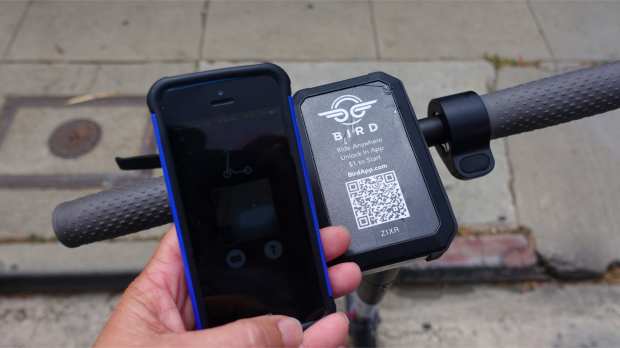Will Bird’s Payment Plans Take Flight?

(Warning: This article contains puns aplenty, fowl indeed).
Bird, the scooter company, may ruffle some feathers in the very cities and locations where it seeks to engender goodwill — more so than it already has.
And, beyond that, here are some key questions: Will its foray into payments push cash the way of the dodo and take flight?
In an effort to expand the Bird platform, to add additional functionality that will keep users sticky, bring in more revenues and cross-pollinate use cases a la Uber … now comes a way to pay through the Bird app.
Bird said in its announcement of Bird Pay, now being trialed in two California hubs, “With more than 58 percent of Bird rides heading to or ending at a local business each day, Bird fosters connections between people and their local communities.”
The company’s site also states that there is “no hardware” for merchants and “no credit card or cash” on the part of consumers. Bird, of course collects fees, which on the site are quantified as being “lower” — which we assume means lower than card fees.
In terms of mechanics, Bird Pay would let consumers use the app to buy goods and services from local merchants (those who choose to participate, of course) in the same locales in which they rent Bird’s scooters. The payments themselves will be done in conjunction with a QR code read at the point of sale.
Making Contact with Contactless
At a high level, the endeavor is one that fosters a further embrace of digital, contactless payments. As we’ve reported in a recent “How We Will Pay” study, interest in contactless payments is on the rise, with 31 percent of consumers surveyed interested in those types of payment offerings at the end of last year, versus 26 percent previous.
As noted in this space Tuesday (Feb. 25), and via statement from Bird CEO Travis VanderZanden, “An early insight that emerged shortly after introducing Bird in Santa Monica was that it had the potential to not only allow people to avoid the chore of circling a block to find parking resulting in congestion and frustration, but it could also foster a more direct connection between people and local businesses.”
He went on to state, “Store owners in the community often tell me, ‘Birds outside bring business inside.’ This phenomenon paired with our commitment to community resulted in Bird Pay which helps drive even more customers to local businesses.”
Now: Adding in-app payments is never necessarily a bad strategy. But Bird’s move tries to take an audience that — by dint of already using apps to rent electric scooters — already may be tech-savvy enough to have embraced digital payments such as Google Pay or PayPal or, well, a host of others.
The odds are that those users already wield digital wallets across a host of other transactions, and may simply not make the switch to using a Bird-specific payment service solely when they use Bird scooters. It’s a narrow setting and a narrow window of opportunity to remember to use the service, and then use it — keeping the app open and active throughout one’s entire journey. Protocol has noted that QR codes have had less success in the U.S. than have been seen elsewhere, especially in countries like China.
And then there’s that scooter issue itself. Though Bird has said that a majority of riders start or end at a business, consider the fact that at least some of this comes into play when people just pick up or end their rides, in part just leaving the bikes where they are — without necessarily venturing into stores. This contributes to the dreaded “congestion” problem — where two-wheeled vehicles mass in locations like Hitchcockian birds of prey coming to feast. That congestion plagued companies like Bird and Lime and led to bans across some cities on the bikes and scooters themselves.
Santa Monica and Los Angeles will be the initial testing grounds for the payment service, which will give indications of whether the payment option will truly be a feather in Bird’s cap or not.
